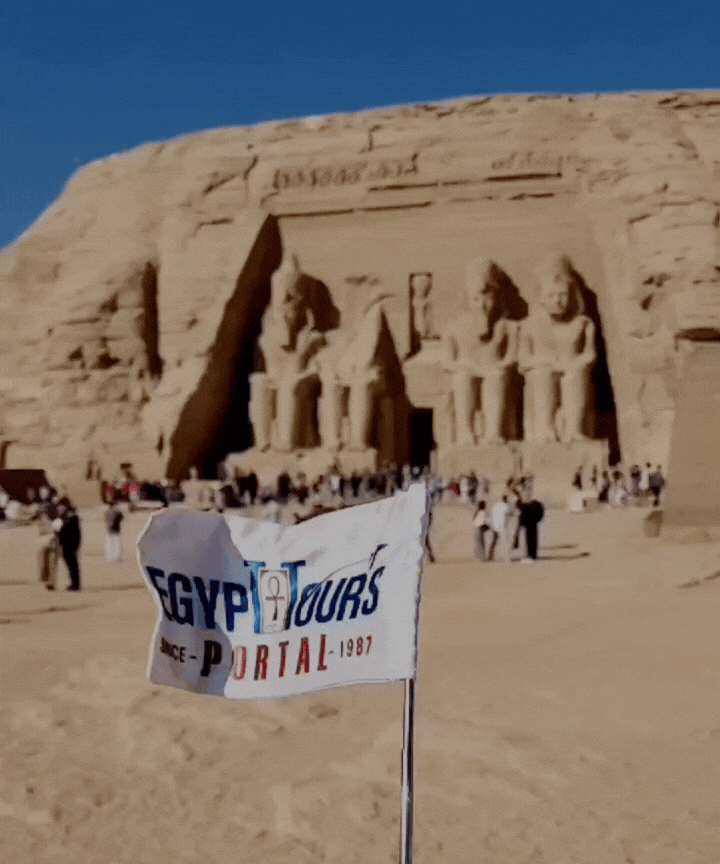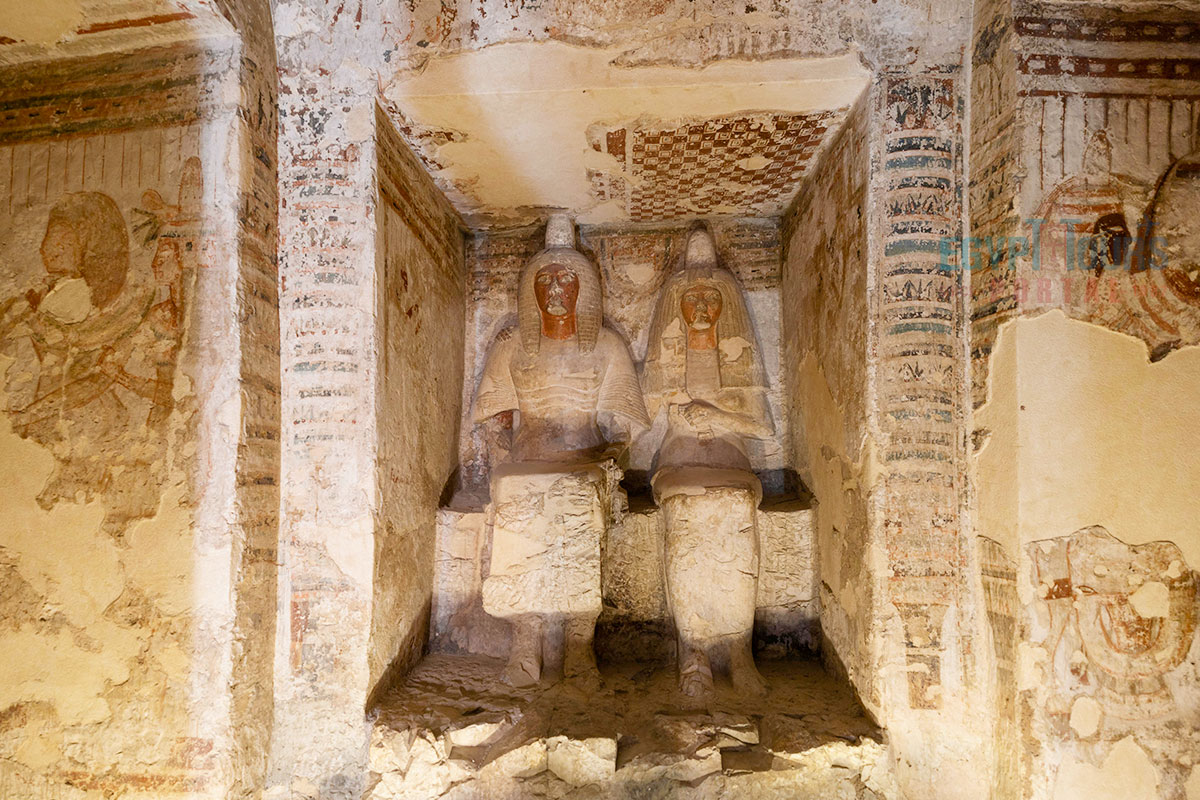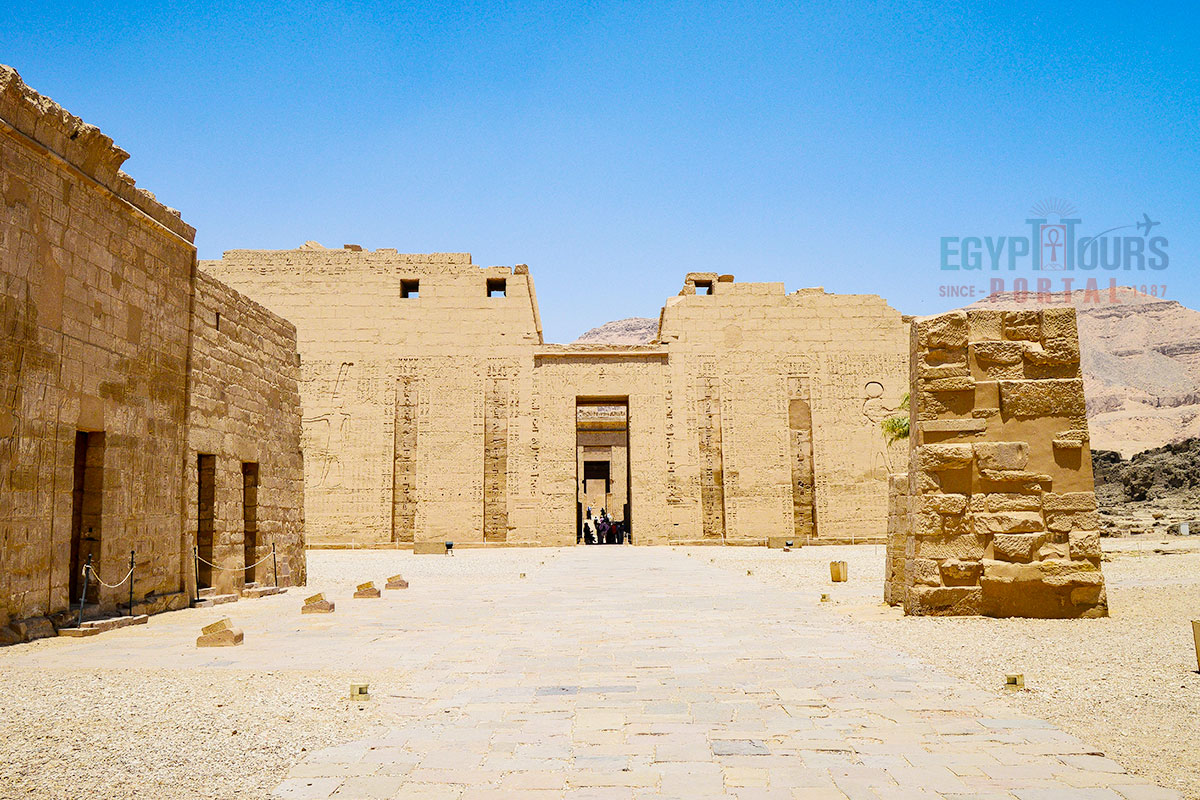The Valley of the Nobles in Luxor, located on the west bank of the Nile, is a remarkable yet often overlooked archaeological site containing over 450 tombs of high-ranking ancient Egyptians from the New Kingdom. Unlike the grand royal tombs, these resting places of viziers, priests, and scribes offer intimate insights into everyday life, religion, and civil service through beautifully preserved wall paintings and inscriptions. Featuring rock-cut architecture and richly decorated chambers, the tombs reveal a deep cultural focus on the afterlife and the values of Ma’at—order and balance. Accessible by road or Nile cruise, the Valley provides a vivid window into the social structure and personal worlds of ancient Egypt’s elite.


The Valley of the Nobles is a living milestone of wonder hidden in golden sands which are often overshadowed by the more famous Valley of the Kings and Valley of the Queens which offers a remarkable insight into the lives of ancient Egypt's elite. This lesser-known necropolis, located on the west bank of the Nile in Luxor, is home to hundreds of tombs carved into the sandstone cliffs.
While the royal tombs are renowned for their grandeur, the Valley of the Nobles holds immense historical and cultural value, showcasing vibrant frescoes and inscriptions that tell the stories of Egypt’s civil servants, military leaders, and high-ranking officials from the New Kingdom of Egypt (1570–1070 BC).

The Valley of the Nobles is situated on the west bank of the Nile, opposite Luxor. It is part of the larger Theban Necropolis, nestled between notable sites like the Ramesseum and Hatshepsut Temple. There are many ways to reach the tomb of the nobles including a 1-hour flight from Cairo or a 10-hour sleeper train that brings travelers to Luxor.
A 30-minute flight from Hurghada or a scenic 4-hour drive will get visitors to Luxor. The site is a 3-hour drive away from Aswan or can be accessed via a Nile cruise, a popular multi-day journey that offers a leisurely trip through the heart of Egypt. You can easily book with a travel agency that will handle all transfers and accommodations plus a skilled tour guide who will explore the glorious wonders of this mysterious valley.

The Valley of the Nobles served as the final resting place for Egypt’s powerful officials, courtiers, and noblemen who lived during the New Kingdom. Unlike the elaborate tombs of pharaohs, the tombs here are smaller, yet incredibly detailed, reflecting the personal and professional lives of those buried within. Over 450 tombs have been discovered, though some remain lost or undocumented.
Some tombs, such as those of Prince Sarenput I and Prince Sarenput II, date back to earlier periods, including the Old Kingdom (2,700-2,200 B.C.E.) and the Middle Kingdom (2,050-1,800 B.C.E.) plus some from the New Kingdom (about 1,550-1050 B.C.E). The tombs were typically decorated with frescoes depicting religious rituals and daily activities, giving us invaluable insight into the ancient Egyptians' worldviews, social structures, and practices.
Discover the lives of the Nobles of the ancient Egyptian civilization
Read More
The Valley of the Nobles is home to hundreds of ancient Egyptian tombs, each offering a unique insight into the lives and duties of Egypt's high-ranking officials, priests, scribes, and military leaders, plus more facts about ancient Egyptian life, customs, and beliefs. Here is a comprehensive list of over 30 famous tombs within this necropolis, known for their artistry, historical significance, and preservation:

The Valley of the Nobles was not only a burial site but also a means for the deceased to achieve eternal life through their association with the divine. The tombs were filled with frescoes, inscriptions, and offerings intended to guide the soul through the afterlife. Unlike the tombs of pharaohs, which were focused on grandeur and wealth protection, the Nobles' tombs emphasized their professional achievements and personal lives, allowing them to be remembered through the imagery of daily life of ancient Egypt, religious ceremonies, and their service to the pharaoh.

The tombs in the Valley of the Nobles are typically smaller than the royal tombs, but they vary in style depending on the period and status of the individual. Many are rock-cut tombs carved into the cliffs, with a staff-tomb design that originated during the 11th Dynasty. The Tombs in design feature the same designs of a closed vault filled with everything the person needs. Tomb facades are often adorned with pillars and inscribed clay funerary cones placed above the entrances, bearing the name and title of the tomb owner.
Inside the tombs, the walls are decorated with vivid frescoes depicting daily activities and religious scenes. Hieroglyphic writings are found in all tombs, featuring different facts and tales about each of the persons of each tomb. These artistic representations serve as a visual record of ancient Egyptian customs, providing a glimpse into the life and society of the time.
Explore the remarkable architecture of the ancient Egyptian civilization
Read MoreThe Valley of the Nobles is a lesser-known archaeological treasure that offers a detailed glimpse into the daily life and spiritual beliefs of ancient Egypt’s elite. Unlike royal tombs, it showcases vivid scenes of everyday life and religious rituals through diverse and intricate tomb decorations. Don't miss the chance to explore the magical attractions of Luxor and Aswan with our magical Egypt tours and Nile cruises to live a memorable travel experience filled with knowledge and wonder.
Private 4 Days Cairo Tour Packages for New Zealander Travelers 4 days Cairo Egypt To...
Tour Location: Cairo – Giza...
5 Days Cairo and Alexandria Tour Package For New Zealander Travelers 5 days Cairo an...
Tour Location: Cairo/Giza/Alexandria...
6 Days Cairo, Luxor & Aswan Tour Package For New Zealander Travelers 6 days Cair...
Tour Location: Cairo/Giza/Aswan/Luxor...
Amazing 7 Days Cairo and Hurghada Holiday for New Zealander Travelers 7 Days Cairo &...
Tour Location: Cairo – Giza – Hurgh...
The Valley of the Nobles is worth visiting. It offers a unique glimpse into the lives and beliefs of ancient Egyptians, particularly during the New Kingdom period. While it may not be as famous as the Valley of the Kings, it provides a more intimate and less crowded experience, allowing you to appreciate the intricate details of the tombs and their decorations.
There are over 400 tombs in the Valley of the Nobles. This vast number reflects the importance and wealth of the nobles and officials who were buried here.
The largest tomb in the Valley of the Nobles is that of Nakht, a high priest of Amun during the reign of Amenhotep III. This impressive tomb features stunning wall paintings depicting scenes of daily life, religious rituals, and the afterlife.
The entire country of Egypt deserve to be explored with its every heavenly detail but there are places that must be seen before any other such as the breathtaking Hurghada's red sea, The wonders of Cairo the pyramids of Giza, the great sphinx, the Egyptian Museum, Khan El Khalili Bazaar, the wonders of Luxor like Valley of the Kings, Karnak & Hatshepsut temple and the wonders of Aswan such as Abu Simbel temples, Philea temple, Unfinished obelisk and The Wonders of Alexandria like Qaitbat Citadel, Pompey's Pillar and Alexandria Library. Read more about the best places to visit in Egypt.
If you want to apply for a Visa On Arrival that lasts for 30 days then you should be one of the eligible countries, have a valid passport with at least 6 months remaining and pay 25$ USD in cash, as for the E-Visa for 30 day you should have a valid passport for at least 8 months, complete the online application, pay the e-visa fee then print the e-visa to later be presented to the airport border guard. You could also be one of the lucky ones who can obtain a free visa for 90 days. Read more about Egypt travel visa.
Egypt has a variety of delicious cuisines but we recommend “Ful & Ta’meya (Fava Beans and Falafel)”, Mulukhiya, “Koshary”, a traditional Egyptian pasta dish, and Kebab & Kofta, the Egyptian traditional meat dish.
The best time to travel to Egypt is during the winter from September to April as the climate becomes a little tropical accompanied by a magical atmosphere of warm weather with a winter breeze. You will be notified in the week of your trip if the Climate is unsafe and if any changes have been made.
You should pack everything you could ever need in a small bag so you could move easily between your destinations.
We have been creating the finest vacations for more than 20 years around the most majestic destinations in Egypt. Our staff consists of the best operators, guides and drivers who dedicate all of their time & effort to make you have the perfect vacation. All of our tours are customized by Travel, Financial & Time consultants to fit your every possible need during your vacation. It doesn't go without saying that your safety and comfort are our main priority and all of our resources will be directed to provide the finest atmosphere until you return home.
You will feel safe in Egypt as the current atmosphere of the country is quite peaceful after the government took powerful measures like restructuring the entire tourist police to include all the important and tourist attractions in Egypt. Read more about is it safe to travel to Egypt.
Wear whatever feels right and comfortable. It is advised to wear something light and comfortable footwear like a closed-toe shoe to sustain the terrain of Egypt. Put on sun block during your time in Egypt in the summer to protect yourself from the sun.
The best activity is by far boarding a Nile Cruise between Luxor and Aswan or Vise Versa. Witness the beauty of Egypt from a hot balloon or a plane and try all the delicious Egyptian cuisines and drinks plus shopping in old Cairo. Explore the allure and wonders of the red sea in the magical city resorts of Egypt like Hurghada and many more by diving and snorkeling in the marine life or Hurghada. Behold the mesmerizing western desert by a safari trip under the heavenly Egyptian skies.
There are a lot of public holidays in Egypt too many to count either religious or nation, the most important festivals are the holy month of Ramadan which ends with Eid Al Fitr, Christmas and new years eve. Read more about festivals & publich holidays in Egypt.
Egypt is considered to be one of the most liberal Islamic countries but it has become a little bit conservative in the last couple of decades so it is advised to avoid showing your chest, shoulders or legs below the knees.
Arabic is the official language and Most Egyptians, who live in the cities, speak or understand English or at least some English words or phrases. Fewer Egyptians can speak French, Italian, Spanish, and German. Professional tour guides, who work in the tourism sector, are equipped to handle visitors who cannot speak Arabic and they will speak enough English and other languages to fulfill the needs of all our clients.
The fastest way is a car, of course, a taxi. If you are in Cairo ride a white taxi to move faster or you could board the fastest way of transportation in Egypt metro if the roads are in rush hour.
The temperature in Egypt ranges from 37c to 14 c. Summer in Egypt is somehow hot but sometimes it becomes cold at night and winter is cool and mild. The average of low temperatures vary from 9.5 °C in the wintertime to 23 °C in the summertime and the average high temperatures vary from 17 °C in the wintertime to 32 °C in the summertime. The temperature is moderate all along the coasts.
It is the home of everything a traveler might be looking for from amazing historical sites dating to more than 4000 years to enchanting city resorts & beaches. You will live the vacation you deserve as Egypt has everything you could possibly imagine.









